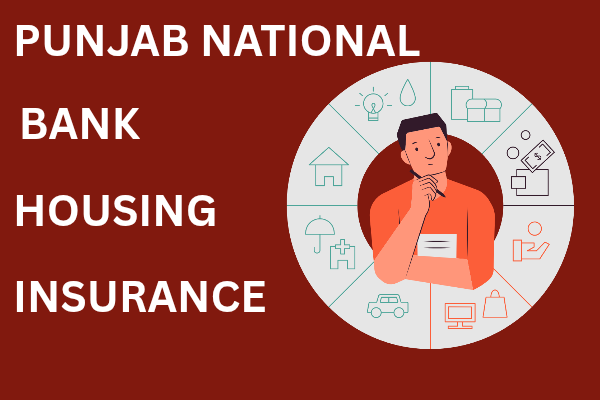Health insurance is now a vital financial safety net due to India’s rising medical costs, the rise in lifestyle diseases, and unexpected hospital bills. One of the top health insurance companies, Star Health Insurance, provides plans that are specifically tailored for a variety of clientele, including women, children, seniors, families, individuals, and even people with serious illnesses. This post will go into great detail about the most well-liked Star Health Insurance plans, their benefits, how to pick the best policy for you, how to submit a claim, and how to save money on premiums.
Popular Star Health Insurance Plan Types
When you choose a health policy, just glancing at the brand is not enough. Additionally, you should know which plan best fits your family size, demands, and budget. The following policy kinds are typically offered by Star Health Insurance (names and features may change periodically, so please see the official brochure before making a purchase).
1. One person’s individual health plan:
This can be a good choice if you are single or if your employer provides family insurance and you would like to have supplemental coverage for yourself.
2. Family Floater Plan:
The entire family—typically the husband, wife, kids, and occasionally parents—shares the sum covered. If everyone in the family has a normal medical history and the family size is medium, this is cost-effective.
3. older Citizen Health Plan:
Specifically created for older citizens, this plan may have various terms, co-pays, and pre-medical testing.
4. Plan for Critical Illness:
offers a lump sum payment in the event that a serious sickness, such as cancer, a heart attack, or a stroke, is diagnosed. This plan is an additional layer of protection, not a replacement for the standard hospitalization policy.
5. Plans that are Top-up or Super Top-up:
The Top-up or Super Top-up plans from Star Health Insurance may be a good option if you currently have health insurance but would like to increase the sum insured at a reduced cost.
6. Plan for Personal Accidents (PA):
financial support in cases such as death or accident-related permanent or partial disability. Since everyone is at risk of accidents, this should be taken with health insurance.
Main benefits of star health insurance

When selecting any type of health insurance, it is crucial to consider its features. These advantages are frequently observed in relation to Star Health Insurance; however, the terms and perks may differ depending on the plan.
1. Cashless treatment network:
Receiving cashless care can be simple and quick if a health insurer has a wide network of hospitals. Verify the list of the best hospitals in your city before purchasing; Star Health Insurance is renowned for its extensive network.
2. No-claim bonus (NCB):
You can receive perks like an increase in the sum covered or a premium discount if you don’t file a claim throughout the policy’s term. distinct plans may have distinct NCB structures.
3. Pre and Post Hospitalization Coverage:
According to the insurance guidelines, costs for tests, medications, consultations, and other expenses may also be paid before and after hospitalization.
4. Day-care procedures:
Medical procedures that do not require 24-hour admission may also be covered under the policy.
5. Restoration benefit:
In many plans, if your sum insured is exhausted, it may be restored under certain conditions. This is a very useful feature in case of large medical bills.
6. Home care/domiciliary treatment:
In some plans, treatment at home (when hospital beds are not available or the doctor advises) may also be covered.
7. Maternity coverage and newborn benefits:
If you are in the family planning stage, it is important to check whether the plan has maternity coverage, what is the waiting period, and what cover is available for the newborn baby.
How to choose the right star health insurance policy

Finding the “cheapest premium” is frequently not the only consideration when purchasing a health policy. It is preferable to take these actions:
1. Understand your health profile:
Your family’s medical history, age, current co-morbidities, lifestyle (smoking, high-stress employment, sedentary lifestyle), and city hospital costs (Tier-1/Tier-2) will all influence the amount insured. These days, many financial planners advise a coverage of Rs 10–25 lakh for metro areas; however, the final choice will depend on your family size and budget.
2. Verify the network hospitals’ list twice:
Verify whether the specialist hospitals that are closest to you are part of the Star Health Insurance network before making a purchase.
3. The claim process’s ease of use and assistance:
Many people purchase policies with cheap premiums, but they run into issues when it comes time to file a claim. Verify the insurer’s claim support by looking at its reputation for having a round-the-clock helpline, app support, and speedy cashless approvals.
4. Sub-limits, co-pay, room rent cap:
Pay special attention to these key words hidden in the policy document. Room rent cap can take a large part of the cost incurred in big hospitals out of your pocket. Co-pay can also mean you have to bear a certain percentage of the cost in every claim.
5. Waiting period and exclusions:
Read about the waiting period for pre-existing diseases (PED), waiting period for maternity, and which diseases/procedures have exclusions in the first few years. Do not ignore these KPIs while buying a plan from any company including Star Health Insurance.
6. Restoration, super restoration, and NCB:
If you have a big family, then the restoration benefit is very useful. Also, it is better to know how the NCB will be calculated, whether it will increase the sum insured or reduce the premium.
Methods for filing a claim with Star Health Insurance
Knowing how to file a claim is the most crucial step after purchasing health insurance. These are the procedures that are often followed while dealing with Star Health Insurance; however, the specific stages may differ depending on the hospital and coverage.
Cashless claim
1. Display Policy/E-Card:
Present your e-card or insurance details at the hospital’s TPA/Insurance desk.
2. Pre-Authorization Form:
The hospital will submit to the insurance a request for pre-authorization.
3. permission/Question:
The insurer requests further details or permission.
4. Treatment and Discharge:
Your treatment proceeds cashless after permission. At the time of discharge, the hospital and the insurer settle the bills immediately; you might only be responsible for non-payable things.
Reimbursement Claim
1. After treatment, collect bills:
Prescriptions, diagnostic reports, discharge summaries, and original invoices should all be kept secure.
2. Fill out the claim form:
Within the allotted period, submit the Star Health Insurance claim form and all supporting documentation.
3. Verification and settlement:
The insurance company pays for qualified expenses after confirming the documentation. The business might ask you for more details if any documents are missing.
Smart ways to keep your premiums low
Although it’s not always a good idea to keep health insurance premiums “as low as possible,” there are a few strategies to obtain a policy that offers good value:
1. Reasonable Sum Insured + Super Top-up Combo:
Take a Rs 5–10 lakh base plan and top it off with a super top-up. This guarantees coverage even in the event of significant medical expenses, and the entire price is frequently within budget.
2. Pay close attention to the deductible and co-pay:
Selecting a plan with a higher deductible can lower the price if you are young and have an emergency reserve. However, keep in mind that you will be responsible for paying this amount out of pocket when you make your claim.
3. Individual vs. family floater:
For small families, Star Health Insurance’s family floater plan is frequently less expensive. However, in order to prevent excessive premium increases, it is preferable to have a separate coverage for parents who are elderly.
4. Long-term (2–3 year) policies:
A lot of businesses provide multi-year policy discounts. It might make sense to choose a longer term if cash flow allows.
5. Benefits of a healthy lifestyle and wellness:
Certain plans provide incentives or savings for fitness objectives, healthy behavior, etc. You can lower your premium or renewal cost by taking advantage of these.
Health insurance serves as timely and sufficient protection against medical expenditures, yet many individuals view it as a simple “cost-saving” instrument. When selecting Star Health Insurance or any other brand, don’t rely solely on low premiums. A policy may end up costing you a lot of money when it comes time to make a claim if it has an excessive number of sub-limits, co-pays, or room rent ceilings. Coverage, features, network, and claim support are all important considerations when making a decision.
Conclusion
Nowadays, health insurance is just as crucial as life insurance. Companies like Star Health Insurance have introduced a number of plans to meet various needs, allowing clients to select the one that best suits their requirements. But in order to make the best choice, you must carefully weigh factors like your family’s and your own health, your budget, city medical costs, waiting periods, sub-limits, network hospitals, and claim assistance.
If you find this blog post useful then please follow this page, all the information related to finance is given on this website and inform other people by sharing this page. Thank you.









